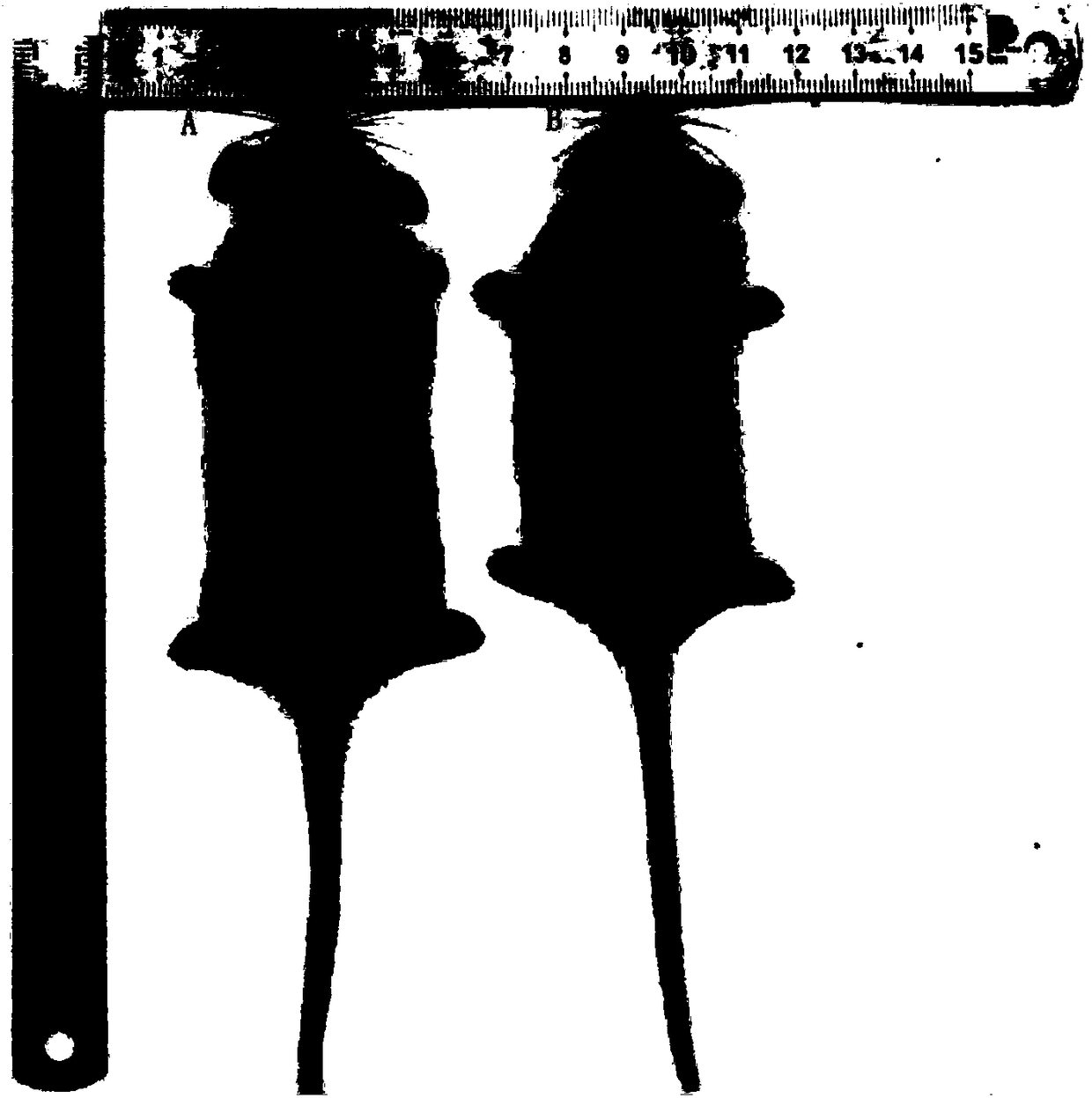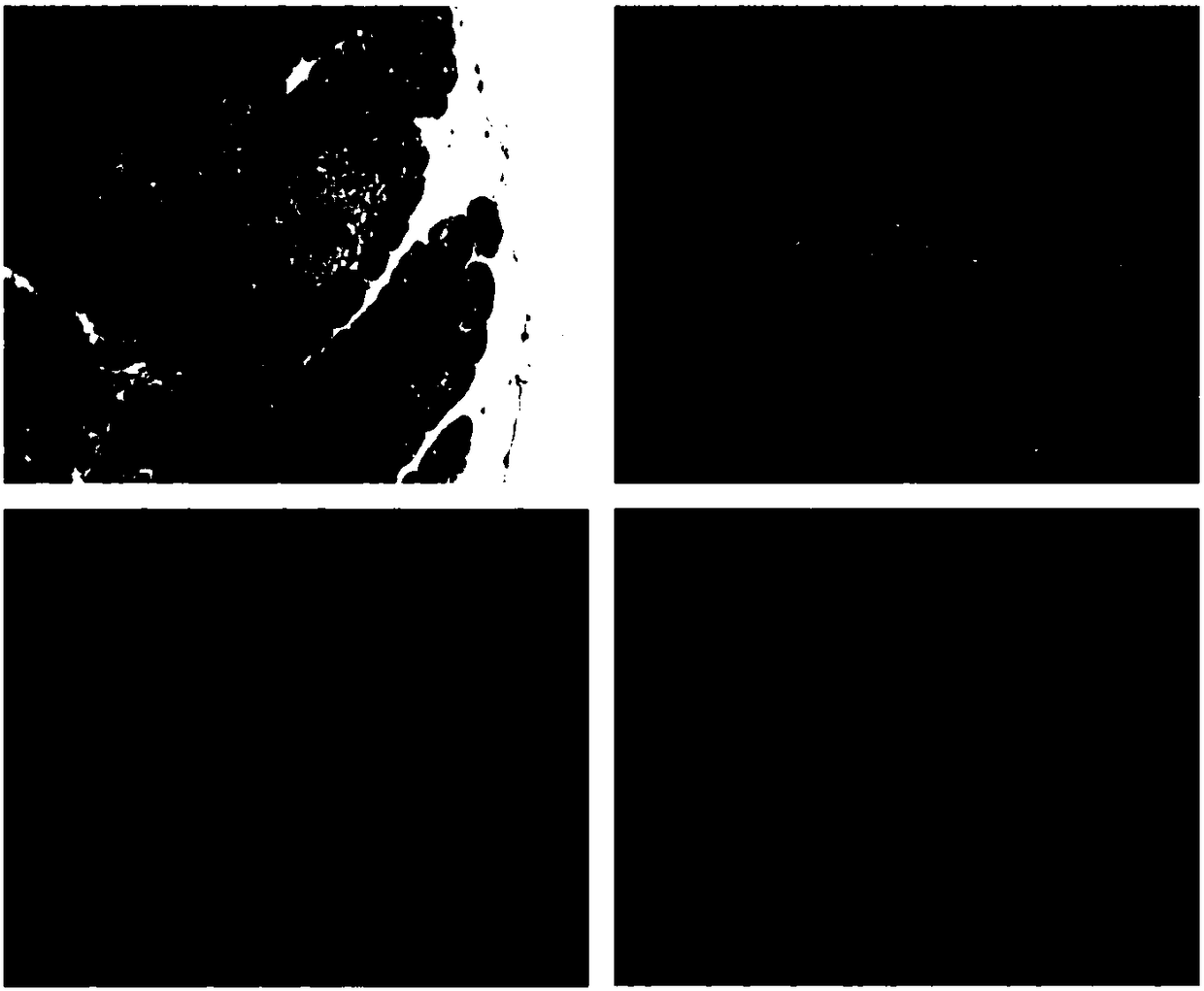Rapid modeling method for childhood rat type 1 diabetes mellitus
A technology of type 1 diabetes and modeling method, which is applied in the field of rapid modeling of type 1 diabetes in young mice, can solve the problems of easy death of young mice, limitations, low modeling success rate, etc., and achieves high modeling rate and operability. The effect of strong sex and low mortality
- Summary
- Abstract
- Description
- Claims
- Application Information
AI Technical Summary
Problems solved by technology
Method used
Image
Examples
Embodiment 1
[0023] Embodiment 1 Modeling method
[0024] After 3-week-old C57BL / 6 mice were adaptively fed for 3 days, they were marked with ear nails. Fasting and water deprivation for 15 hours before the modeling started, and the fasting body weight and blood sugar were measured and recorded. Randomly divided into blank control group, 30mg·kg -1 group, 40mg·kg -1 group, 50mg·kg -1 group, 60mg·kg -1 groups, 10 mice in each group, and the required dosage of the mice was calculated according to the fasting body weight.
[0025] Dissolve STZ in pH 4.2-4.5 sodium citrate buffer solution (filtered with a 0.22 μm filter in a biological clean bench and stored at 4°C) to prepare a solution with a concentration of 500 ㎎ / ml. The fully dissolved drug solution should be stored away from light, placed on ice, and used up within 30 minutes. It should be prepared and used immediately each time to prevent the drug from being degraded and ineffective. The administration method is as follows: inject...
Embodiment 2
[0026] Example 2 Model Establishes Judgment Criteria
[0027] The mice after 1 week of modeling (that is, the 12th day from the beginning of modeling) were randomly measured for 3 days, and the blood glucose was ≥16.7mmol L for 3 consecutive days -1 The model was successful, and the blood glucose and body weight of mice in each group were measured every week.
[0028] The results showed that observing the general signs of the mice, the mice in each experimental group had the typical diabetes symptoms of polyphagia, polydipsia, and polyuria. Abnormal manifestations of the nervous system such as listlessness or hyperactivity, and its appearance changes such as figure 1 as shown, figure 1 30mg·kg -1 group and 50mg·kg -1 Outline drawings of mice in groups.
[0029] Of which 50mg·kg -1 、60mg·kg -1 The blood glucose of mice in the experimental group was ≥16.7mmol·L for 3 consecutive days -1 , the modeling was successful, and the mice in the 50mg·kg-1 experimental group had t...
Embodiment 3
[0030] Example 3 Detection of pancreatic pathological changes by HE staining and immunohistochemistry
[0031] Pathological specimens of target organs were collected 1 month after modeling. Mice were sacrificed by cervical dislocation, pancreas and kidney were quickly removed, fixed in 4% paraformaldehyde solution, routinely embedded in paraffin, and sectioned. The islet tissue was divided into two parts, one part was stained with HE, and the pathological changes of the islet tissue were observed under a microscope. The other part of the tissue was tested by immunohistochemistry. The islet tissue sections were subjected to xylene gradient dewaxing, ethanol gradient dehydration, distilled water washing, antigen retrieval, antibody incubation and DAB color development, hematoxylin counterstaining, dehydration and transparency, and neutral gum mounting. Microscope observation and photographing.
[0032] 30mg·kg -1 group and 50mg·kg -1 The mice in the group were treated accord...
PUM
 Login to View More
Login to View More Abstract
Description
Claims
Application Information
 Login to View More
Login to View More - R&D
- Intellectual Property
- Life Sciences
- Materials
- Tech Scout
- Unparalleled Data Quality
- Higher Quality Content
- 60% Fewer Hallucinations
Browse by: Latest US Patents, China's latest patents, Technical Efficacy Thesaurus, Application Domain, Technology Topic, Popular Technical Reports.
© 2025 PatSnap. All rights reserved.Legal|Privacy policy|Modern Slavery Act Transparency Statement|Sitemap|About US| Contact US: help@patsnap.com



